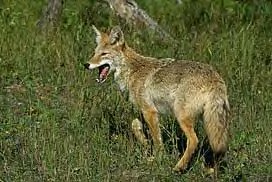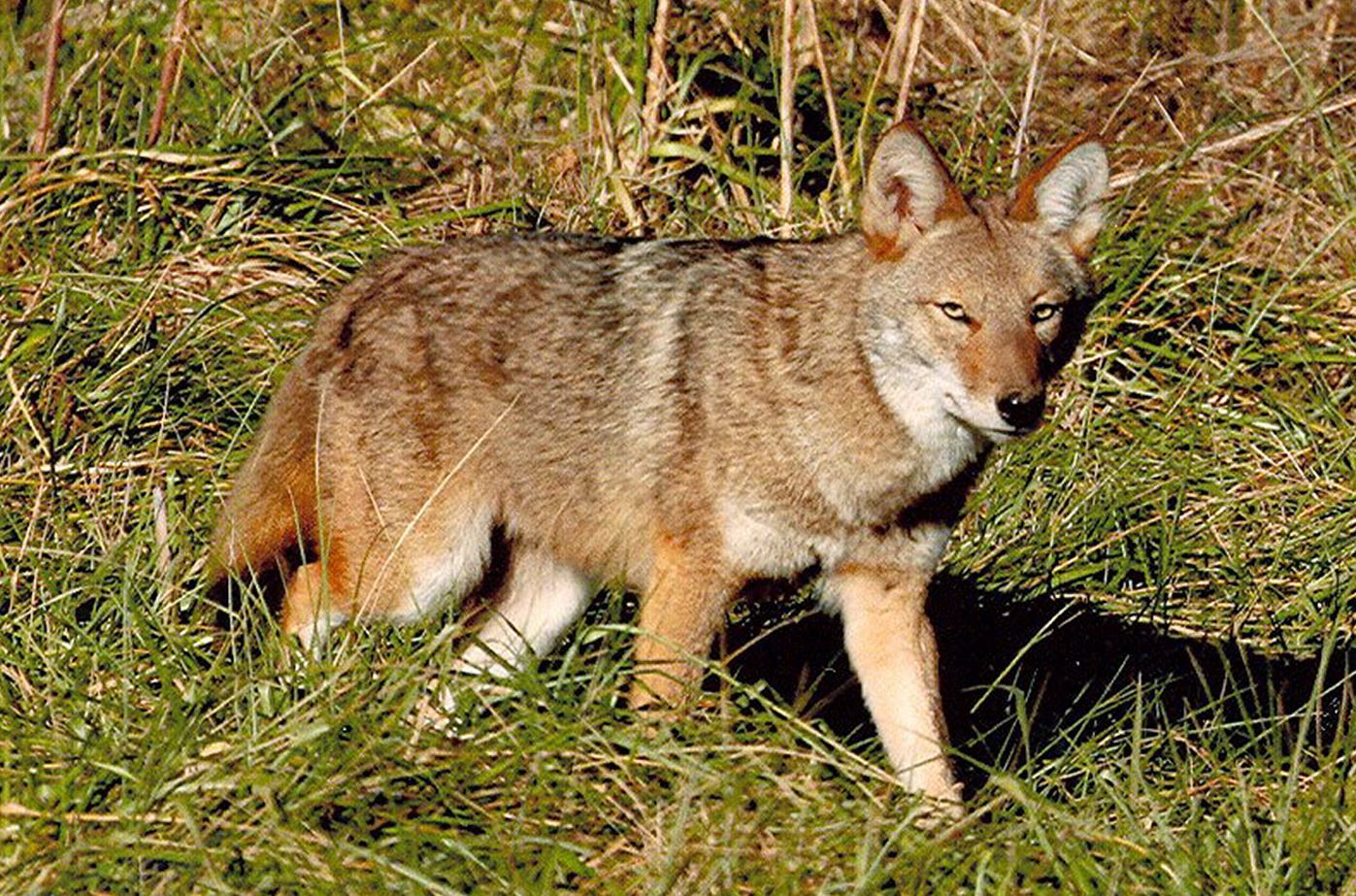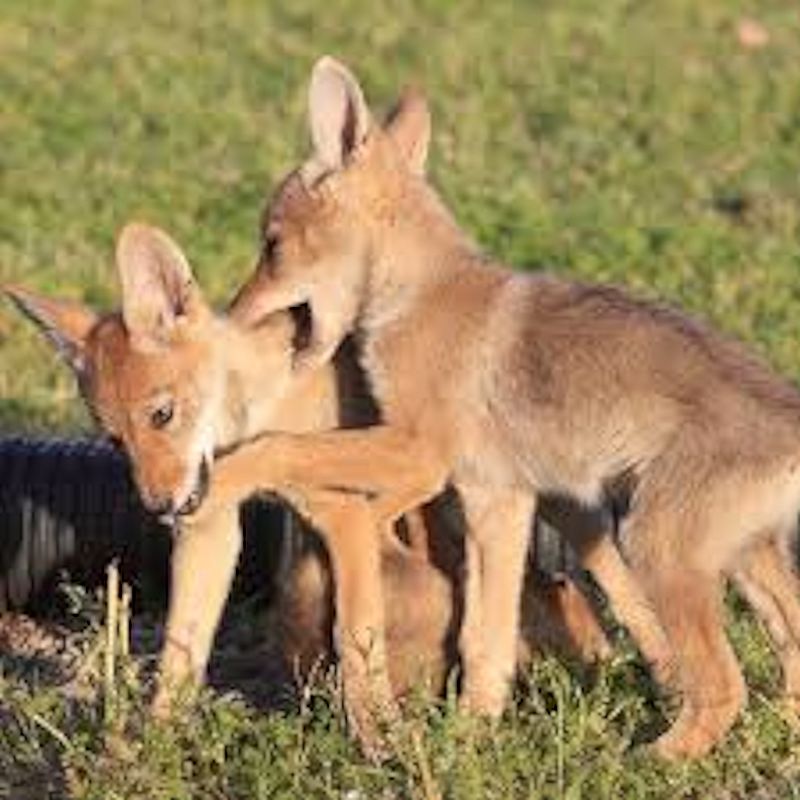Wolves, Foxes, and Coyote
Description
Grizzled gray or orangish gray above, with buff underparts. Long, rusty or yellowish legs with dark vertical line on lower foreleg. Bushy tail with black tip. Ears prominent. Slender, pointed snout. Height 23–26" (58–66 cm); Length 3'5"–4'4" (105–132 cm); Weightt 20–40 lb (9.1–18.2 kg); a very large individual may reach 55 lb (25 kg).
Similar Species
Gray and Red wolves are larger, with larger nose pads; both hold tail horizontal. "Coydogs," hybrids of Coyote and domestic dog, especially shepherd mixtures, are larger, usually lack dark vertical line on lower foreleg, and have relatively shorter and thicker snouts.
Dens
Favored sites are riverbanks,
well-drained slopes, sides of canyons, and gulches. Den mouths
usually 1–2' (300–600 mm) wide, often marked by mound or fan of
earth and tracks.
Scat
Typically canine; often full of hair and
usually deposited on runway.
Tracks
Similar to domestic dog’s, but in a nearly straight line; hindfeet usually come down in foreprints. 4 toes print, all with claws. Foreprint about 2 3/8" (62 mm) long, hindprint slightly smaller. Straddle about 6–80 (150–200 mm). Stride 13" (330 mm) when walking, 24" (600 mm) when trotting, 30" (750 mm) or more when running; much wider gaps signify leaps.
Discussion
The Coyote’s scientific name means "barking dog"; its common name comes from coyotl, the name used by Mexico’s Nahuatl Indians. The best runner among the canids, the Coyote cruises normally at 25 to 30 mph (40–50 km/h), getting up to 40 mph (65 km/h) for short distances, and can make 14-foot (4.25 m) leaps. Tagged Coyotes have been known to travel great distances, up to 400 miles (640 km). The Coyote runs with its tail down, unlike the domestic dog (tail up) or wolves (tail straight).
Sometimes
an American Badger serves as an involuntary supplier of smaller
animals: While it digs for rodents at one end of a burrow, a Coyote
waits to pounce on any that emerge from an escape hole at the other
end. The Coyote stalks like a pointer, "freezing" before it pounces,
and chases down larger prey, such as Snowshoe Hares and cottontails.
A strong swimmer, it does not hesitate to enter water after prey.
Like most carnivores, Coyotes have maternal dens for raising the
young, but do not have permanent homes. The typical den is a
wide-mouthed tunnel, 5 to 30 feet (1.5–9 m) long, terminating in an
enlarged nesting chamber. The female may dig her own den, take over
and enlarge a fox or badger burrow, or use a cave, log, or culvert.
If the den area is disturbed, the female will move the pups to a new
home. The Coyote may pair for several years or even for life,
especially when populations are low.
Its vocalizations are varied,
but the most distinctive—given at dusk, dawn, or during the
night—consists of a series of barks and yelps, followed by a
prolonged howl and ending with short, sharp yaps. This call keeps
the band alert to the locations of its members and helps to reunite
them when separated. One call usually prompts other individuals to
join in, resulting in the familiar chorus heard at night in the West
(although noticed increasingly in the East, as Coyotes grow in
number there). Barking alone, with no howling, seems to be a threat
display employed in defense of a den or a kill.
Although captive
Coyotes have lived for 18 years, and one was known to live in the
wild for 14 1/2 years, most individuals probably live only 6 to 8
years. Predators once included Grizzly Bears, Black Bears, Mountain
Lions, and wolves, but with declining populations of these animals,
they are no longer a threat. Humans are the major enemy, purportedly
killing Coyotes to protect livestock, as Coyotes are accused, often
unjustly, of killing lambs, pigs, and poultry. In the 1970s and
1980s, Coyote pelts became quite valuable, but since the collapse of
the fur industry, there has been little demand for them. Despite
years of being trapped, shot, and poisoned, Coyotes have maintained
their numbers and continue to increase in the East.








